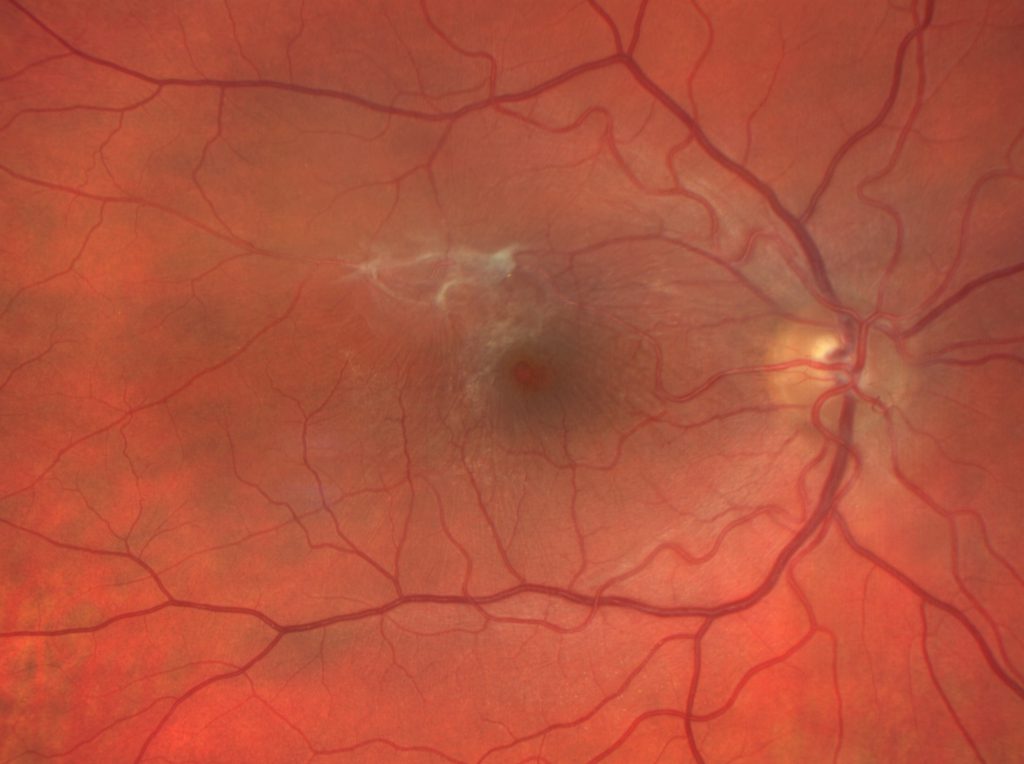An epiretinal membrane is a thin sheet of fibrous scar tissue which develops on the retinal lining at the back of the eye resulting in blurred vision or visual distortion. The condition can also be called pre-macular fibrosis, macular pucker or cellophane maculopathy. Epiretinal membrane formation may be due to the normal aging process of the eye or it may be due to previous trauma, surgery, inflammatory disease, retinal tear or retinal detachment.
Comprehensive assessment for patients diagnosed with epiretinal membrane involves a detailed initial examination, an OCT scan and in some cases, patients may require further investigations such as an OCT angiography and fluorescein angiography to determine the possible underlying cause and the health of the retina underneath the membrane.

When is surgery for epiretinal membrane indicated?
When epiretinal membrane is mild and does not significantly affect your vision, no treatment is required. When the epiretinal membrane interferes and distorts your vision, vitrectomy microsurgery with removal of the epiretinal membrane is indicated. This may be combined with cataract surgery if a significant cataract is present at the time the epiretinal membrane is diagnosed. Vitrectomy surgery has a 80-90% success rate in removing the epiretinal membrane and restoring the retinal contour, stabilising further deterioration in vision and improving the distortion in vision.
There are some cases of epiretinal membrane which do not improve as much as expected and some residual distortion and macular oedema remain. Prognosis depends on the severity of the epiretinal membrane and the length of time the membrane has been present. Further treatments may be required and these may include intravitreal therapy. If left untreated, some epiretinal membranes may remain stable while others may progress with permanent vision loss if left for long periods of time.
What are the benefits and risks of epiretinal membrane surgery?
Vitrectomy surgery is usually succesful in removing the membrane and improving vision and the distortion and some patients report continued improvement in their vision up to a year. The operation is performed as a day surgery or in-patient procedure. Some face down positioning may be required post-operatively and in some cases, a long-acting gas bubble is required to tamponade any retinal holes or tears which are identified at the time of surgery.
While epiretinal membrane surgery has a high success rate, complications can arise even though they are rare. A cataract may develop earlier than would be expected during the normal aging process. Retinal tears, retinal detachment and macular holes may develop during or following surgery and further vitrectomy surgery would be required. Infections and haemorrhage are very rare risks but can occur with any surgery.
